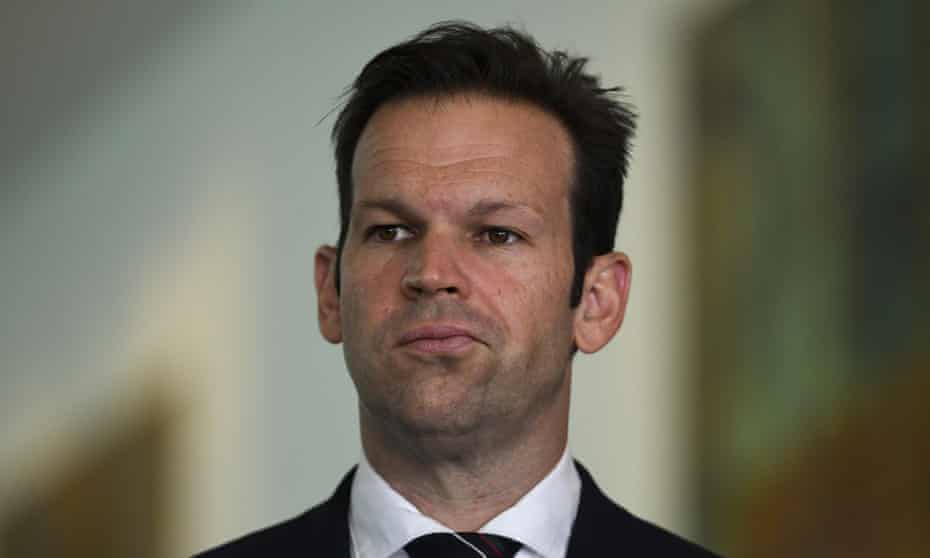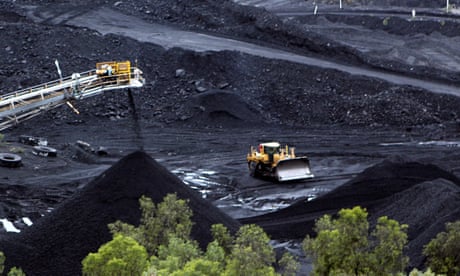Extract from The Guardian
The scheme that the Nationals senator says will leave Queensland ‘marooned’ was actually designed and introduced by the Coalition
- Temperature Check is a weekly column examining claims about climate change made by governments, politicians, business and in the media. See the latest column and follow the series here

Australia’s climate wars may not be over but, as key targets and policies from the two main parties are now out, there does appear to be a quietening of the political gunfire.
But Queensland coalition senator Matt Canavan was still looking to fire shots, with a front page claim that Labor’s new climate policy constituted “revenge” on his home state.
In a story in the Courier Mail, Canavan claimed Labor’s policy would let “other states off the hook” and leave the state “marooned” with its “radical carbon cuts”.
Last week the opposition announced it would cut emissions by 43% from 2005 levels by 2030 if it wins the next election. This compares to the Morrison government’s target of 26% to 28%.
Canavan claimed Labor was looking to target 215 high-emitting facilities, and that almost one-third of those were in Queensland. This apparently equalled revenge for the state rejecting the opposition during the 2019 federal election.
The Nationals senator said Labor’s “radical carbon cuts” would cause “massive job losses” in the state.
Yet Labor’s proposal is based on a suggestion from the Business Council of Australia (BCA) to tighten a policy that was legislated in November 2014 by the Coalition, and came into force when Malcolm Turnbull was prime minister.
That policy is known as the safeguard mechanism, under which facilities such as mines and smelters that emit more than 100,000 tonnes of CO2 equivalent a year have to buy carbon credits if their emissions go above a predetermined cap.
Labor does want to tighten this mechanism by reducing the caps each year, but hasn’t decided yet exactly how the cuts will be distributed across the facilities.
So the list of facilities Canavan says Labor is using to exact revenge on his own state, is in fact a list of companies compiled through the policy of his own government.
AngloAmerica’s Capcoal mine in the Bowen Basin, producing coal for steel-making, was top of a list of “Queensland’s heaviest emitters” published in the Courier Mail, with emissions at 3.15m tonnes of CO2-equivalent a year.
Capcoal’s owner, Anglo American, has a target to be carbon neutral across its worldwide operations, including its Australian mines, by 2040. Radical carbon cuts, anyone?
But the Courier Mail’s list was not a rundown of Queensland’s heaviest emitters (and nor was it ‘revealed’ as the newspaper claimed), but rather a list of the highest emitting facilities that are registered under the safeguard mechanism.

Queensland’s biggest corporate emitter of greenhouse gases, according to federal government data, is actually Stanwell – the state-owned coal power generator that emits 17.1Mt of CO2e a year.
Stanwell’s coal power units at Tarong alone emit 9.7Mt, but electricity generators are not currently covered by the safeguard mechanism.
Off the hook?
How about Canavan’s claim that using the safeguard mechanism lets other states “off the hook”?
First, it should be no surprise that as the state with the highest emissions, accounting for almost a third of the nation’s entire footprint, Queensland will need to see greater cuts than elsewhere (the state’s 2030 target is still stuck on 30%).
But in fact the state with the highest emissions under the safeguard mechanism is Western Australia, with 66 facilities generating 46.2Mt of CO2e last year, according to the Clean Energy Regulator’s data.
Queensland had the second highest emissions, with 65 facilities generating 37.7Mt. There are 38 facilities in New South Wales generating 25.6Mt.
Saying that using the safeguard mechanism to cut emissions allows other states “off the hook” isn’t an argument that’s based on any objective reality.
No hiding net zero
There are fewer things more likely to get your audience angry than telling them something is really big and scary, and also that this big and scary thing is being hidden from them.
No longer on Sky News and dropped from his Daily Telegraph column, Alan Jones – a longtime denier of climate change science – has a new streaming show Direct to the People that shuddered to a start this week.
Jones told his new online audience that the world’s financial giants were being geared up for net zero, with $130tn of financial might signing up to the Glasgow Financial Alliance for New Zero.
Jones asked his guest, Canavan, “why aren’t the public being told” and raged that banks were “playing this ideological game with our deposits”.
“This is happening behind the scenes,” said Jones, adding that “we really have the makings of a financial crisis.”
In reality, the shifting of global capital away from fossil fuels is motivated largely by avoiding a crisis where investments in dirty energy sources become stranded, sparking an actual financial crisis. Shareholders have been pushing major energy companies for years to transition their businesses to renewable energy.
This apparently secretive deal that is being hidden from Australians is so clandestine that it has featured in news outlets across the world and is just the latest instalment in an issue that has been widely reported for years.
The coalition has even led a parliamentary inquiry, due to report soon, on the issue of banks and insurers moving investments away from coal projects.
Why are we not being told? The media release from the UK’s chancellor, Rishi Sunak, was presumably issued by mistake?
No comments:
Post a Comment